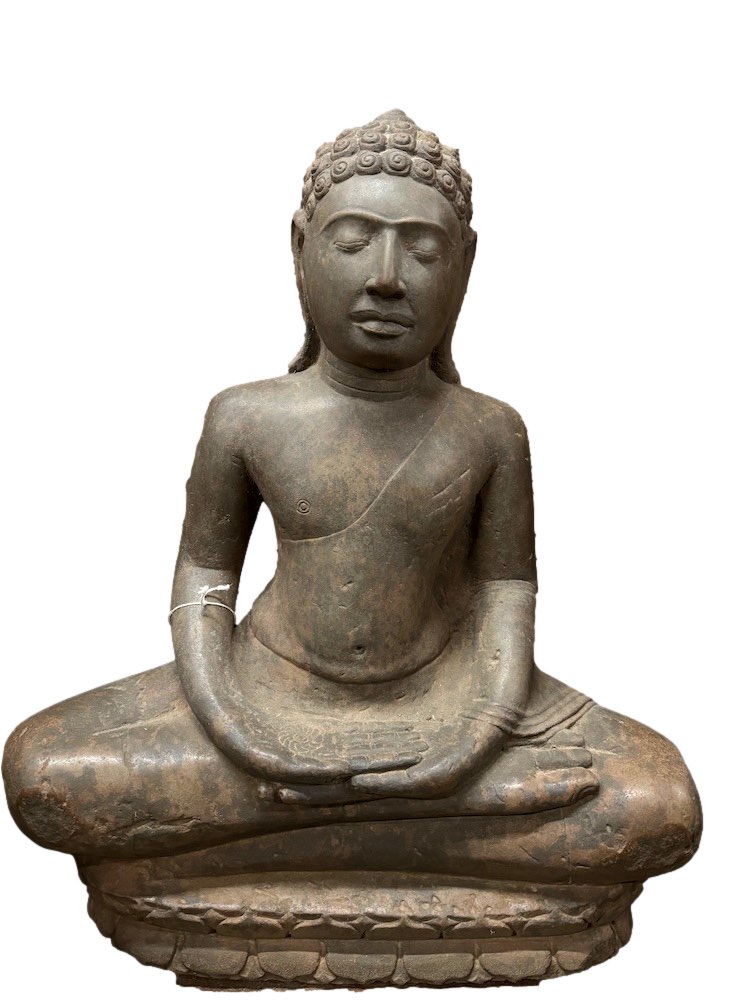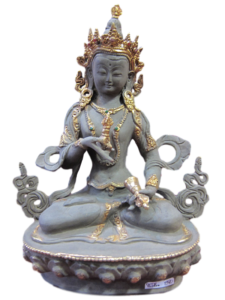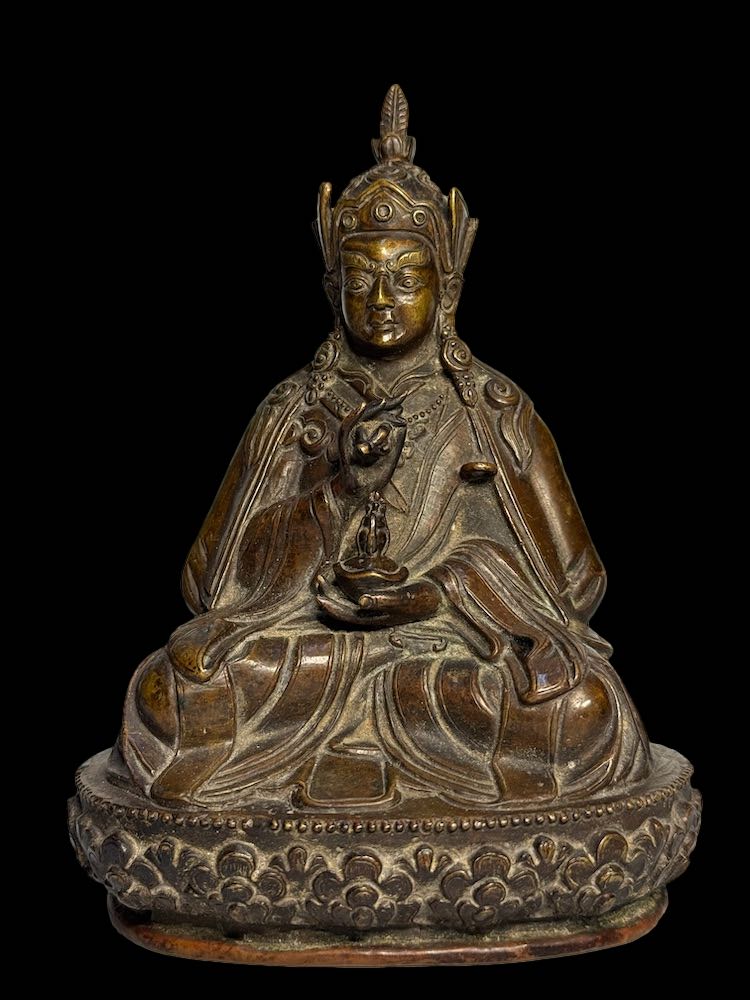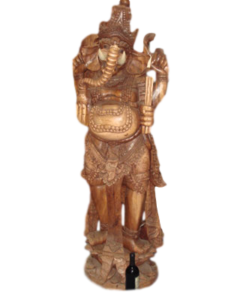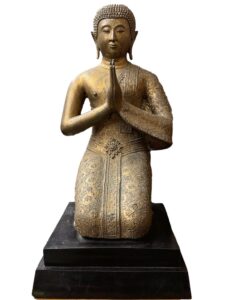

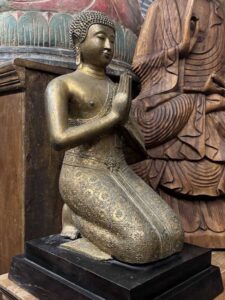

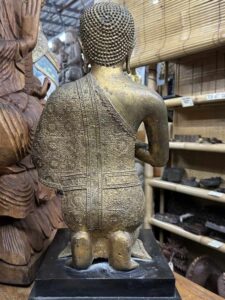
Antique Thai Rattanakosin Bronze Buddhist Statue
$910.00
Description
Elegant bronze statue representing Moggalana, also known as Kolita, disciple of Buddha atop a solid wood base. An original lacquered and gilded bronze. Kneeling statue of Buddhist monk devotee Mogallana with round face, hair in tight curls, elongated ears, and hands placed together in mediatation. The devotee monk wears an intricate, close-fitting robe. His hands clasped in anjali mudra, a posture of adoration before the Buddha. Dressed in a richly embroidered monastic robe. His youthful face expresses deep serenity. Thailand, Rama IV era in Rattanakosin period.
The Rattanakosin Kingdom (1782–1932), the Kingdom of Siam, or the Bangkok Empire. Founded in 1782 with the establishment of Rattanakosin (Bangkok), which replaced the city of Thonburi as the capital of Siam. As one of the most powerful kingdoms in the history of Thailand or Siam. Rattanakosin is the center of Buddha images, statues, and other sculptures. The Rattanakosin Buddhist style differs from the Sukhothai and Lanna Buddhist styles.
There are four periods during Rattanakosin era regarding the development of Buddhist art sculptures and politics. These four periods were named after the kings of Rattanakosin, which are:
1. Rama I and II
The first period was named after King Rama I and Rama II, lasting from 1782 to 1824. The Buddhist art still follows the style and art of the Ayutthaya style. Buddha statues and images were still made from wood and bronze and built on decorated pedestals. One of the famous Buddha statues often seen is Buddha sheltered by Naga.
2. Rama III
This period introduced various sculptures besides Buddha images. The faces of the statues were plain and not decorated, unlike in the first period. King Rama III removed fashion of heavy decoration and replaced it with Buddha images covered in a beautiful robe of flower design.
3. Rama IV
From the reign of King Rama IV (Mongkut; 18 October 1804 – 1 October 1868) onwards, a greater exposure to western styles began to have some influence on Buddha statues. King Rama IV removed the trend of putting crown or jewelry. The King had redesigned the Buddha image to appear more human like omitting the cranial protuberance, the pleated robe and the cross legged meditation posture.
Considered as the golden age of the Rattanakosin art and style. He brought a new era in Thailand in terms of politics as well as art too.
4. Rama V, VIII, and IX
This period started during the reign of King Rama V and continues to the present. This period mainly revolves around three Kings: King Rama V, King Rama VIII, and King Rama IX. The mass production of Buddha statues, Buddha images, and other sculptures was a significant development of this period. The development of Buddha images also involves copying the ancient Buddhist styles of Sukhothai, Lanna, and ancient Ayutthaya. The main tradition of selling Buddha statues to various business galleries and monasteries was established in this period. Thus, the prominent Buddha statues of Thailand that are found in the world are from this period.
A rare, old and beautiful one of a kind piece. Over all in very good shape, and was in very good preserve condition from the previous collector. The gold lacquer had faded from time in some area, which makes it more unique and with a character.
Due to the weight of the statue, the shipping could be more than most similar size pieces. We highly recommond pick up. That way, you can also have a closer look to see the amazing work.
Dimensions: 13.5″ x 11″ x 23.5″
Antique piece. Sell in used, pre-owned condition. Vintage and antique items by nature have variable amounts of wear, imperfections, signs of use, age and time. Perfectly imperfect. Condition shown as in pictures. Kindly contact us if you need more info. or detail pictures.
Due to the size and/or the delicate situation of the item. Please contact us for more detail information /pick up or shipping options.







